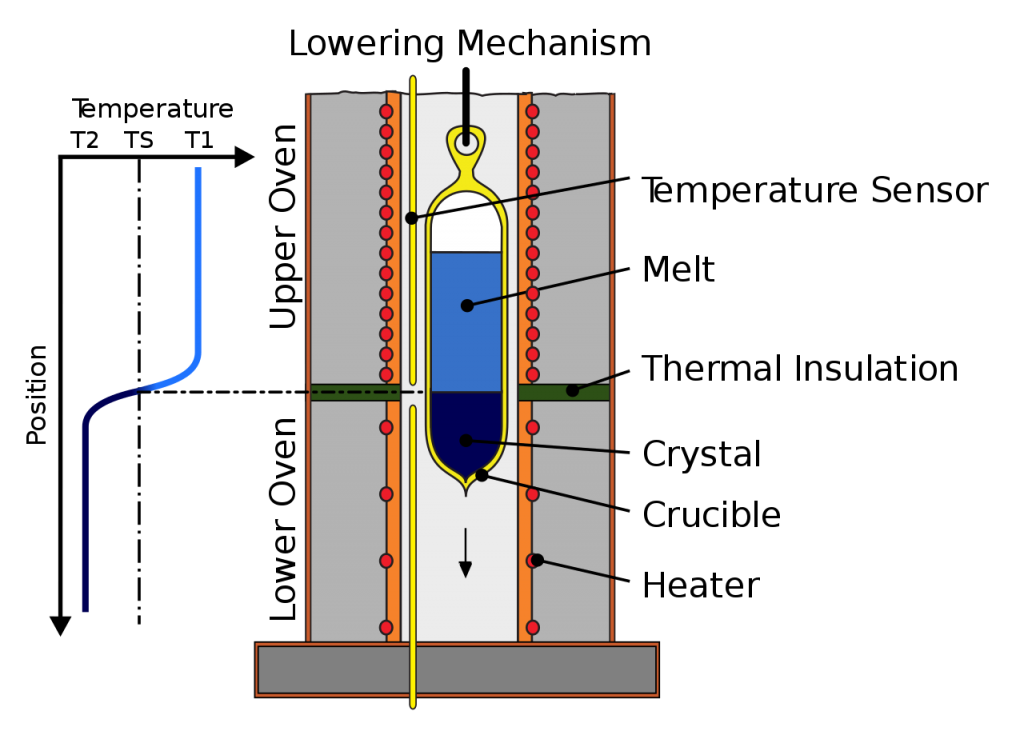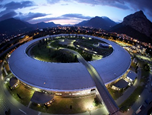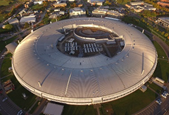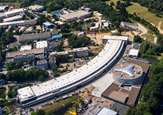Solid State Physics – Condensed Matter Physics – High-Pressure Physics
Research is conducted on crystalline materials using standard laboratory and synchrotron techniques as well as their methods: electrical conductivity, current-voltage characteristics, dielectric permittivity, heat capacity, XPS, UPS, AES, XRD, XAS, etc. Materials are characterized at ambient and extreme conditions – high pressures and varied temperature. The high pressures are generated using hydrostatic compression methods employing diamond anvil cells. Theoretical modeling is performed using HPC cluster equipped with quantum mechanical modeling softwares based on Density Functional Theory.
Materials
Oxides
Na2OsO4; NaV2O4; V2O5; NaOsO3; LiOsO3; PrCuO3; SrTiO3; NbGaO3; SrCoO3; LaAlO3; Bi2WO6; Sr3OsO6; OsO2; Sr2Cr0.5Ni0.5OsO6
2D Materials
TiSe2; TaS2; VSe2; VTe2; HfTe2; BiI3; TlGaSe2; TlInS2
1D Ferroelectrics and Semiconductors
BiSI; BiSeI; BiSBr; BiSeBr; BiSCl; BiSeCl; SbSI; SbSeI; SbSBr; SbSeBr; SbTeI; K2SeO4; Rb2ZnCl4 and similar.
Others
NbIrTe4; MnRuP; CrMnP; CuMnAs; CuMn3As2; Ru3Sn7; Sillenite; Bi2S3; Bi2Se3; Sb2S3; Sb2Se3; EuP8; EuP10; Sn2P2Se6; VF3
Crystal growth at ambient pressure
To obtain bulk crystals we use the vertical Bridgman–Stockbarger technique (see Fig. 1). For smaller pure single crystals we use the growth from the vapor phase. This is preceded by a sequence of typical steps such as vacuuming the ampules or mixing in a rolling furnace where temperature is very slowly raised and reduced to obtain starting mixture. In addition to these methods, we also have sol-gel synthesis equipment and, together with colleagues, carry out synthesis at high pressure-temperature conditions using large volume press.

Figure 1. Schematic view of the Bridgman–Stockbarger furnace [source here].
High-pressure methods
Two different types of devices are properly anticipated for high pressure experiments; the large volume press (LVP) and the diamond anvil cell (DAC). State-of-the-art multi-anvil technologies allow syntheses under high pressure (usually up to 25 GPa) and high temperature (usually up to 2,500°C). Figure 2 a shows the so-called Walker-type multi-anvil module to carry out syntheses at high pressures and/or high temperatures to research new materials. The LVP is equipped with large capacity hydraulic system and the frame is built with a double-sided rail system in order to accommodate two sets of multi-anvil modules, which can be interchanged on a run-to-run basis. The size of the sample held within the LVP can be on the order of 1 mm3 or larger, with better control for the experimental conditions, such as smaller thermal gradient within a well-designed sample chamber, hence offering great advantages in many experiments.

Figure 2. (a) Walker-type multi-anvil module used in LVP for sample synthesis [Max Voggenreiter GmbH, Laboratory Equipment]. (b) Illustration of the three basic components of a diamond anvil cell: opposing anvils, a confining gasket, and sample chamber. A beveled-anvil geometry is shown with culet size A beveled to B at a bevel angle θ [G. Shen and H. K. Mao, Rep. Prog. Phys. 80, 016101 (2017)].
Pressure in the DAC is generated by compressing samples between small flat surfaces (namely culets) at the tips of two gem-quality diamonds (see Fig. 2 b). In order to generate high pressure, the size of the culet is often small (0.1 – 1 mm), limiting the sample volume to less than 10-3 mm3. Due to its small size, the DAC is probably the most commonly used such piece of equipment in high-pressure research. At present, using DAC it is possible to achieve a static pressure up to ~ 400 GPa, which is equivalent to the pressure in the center of the earth. Diamond as the key anvil material is adopted to endure the harshest extreme environments, and at the same time, as the window material for measurements with x-ray energies above 5 keV, UV–VIS–IR radiations below 5 eV, ultrasound, neutrons, and electric-magnetic probes. The DAC is the only static high-pressure apparatus for studies in multi-megabar pressures regions, temperatures as high as 7000 K and as low as 0.03 K, and a full range of in situ characterizations of material properties at controlled and defined extreme P–T conditions. Integrations of the DAC with an array of optical, laser, x-ray, and electromagnetic transport probes have enabled in situ high P–T observations with accuracy rivalling ambient condition investigations.
Synchrotrons
For high-pressure experiments, we use synchrotron equipment which can give very precise and accurate information. Beamlines we have used most often:
Sectors 16, 20, 34. Advanced Photon Source, Argonne National Laboratory, Lemont, USA;

Sector 12.2.2. Advanced Light Source, Lawrence Berkeley National Laboratory, Berkley, USA;

Sector 11-ID. National Synchrotron Light Source II, Brookhaven National Laboratory, New York;

Taiwan invested beamline BL12XU. SPring-8, 1-1-1 Kouto, Sayo-cho, Sayo-gun, Hyogo, Japan.

Some of the most prominent light sources in Europe:
 |
 |
 |
 |
 |
 |  |  |  |  |
| FRANCE | ITALY | UNITED KINGDOM | SWEDEN | GERMANY |
—
Keywords: Crystallography; X-ray photoelectron spectroscopy; X-ray diffraction; X-ray absorption; X-ray synchrotron techniques; Raman spectroscopy; Electronic structure; Phase transitions; Ferroelectric and semiconducting materials; 5d perovskites; Density functional theory; Structural simulations.
